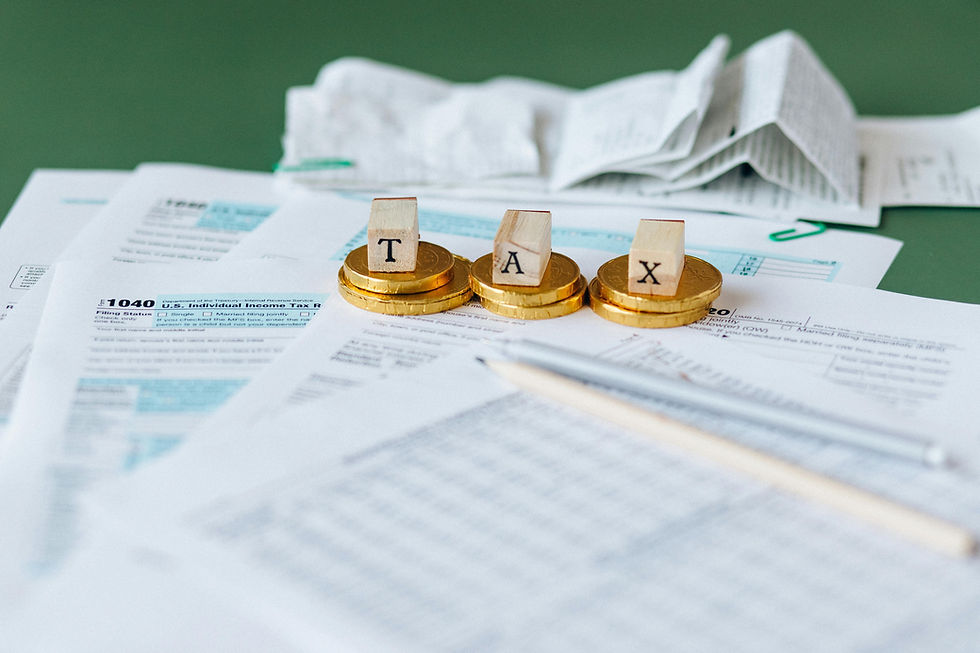The Inflation Surge: Unraveling the Economic Impact of Recent Global Crises
- Ness Kotecha

- Jul 13, 2024
- 4 min read

You’ve probably noticed that the prices of many of the goods and services you buy have increased, especially in the last few years. For example, you may have noticed that the prices of your favorite snacks have increased post-covid compared to before the pandemic. To understand the sudden changes in prices in our daily lives, inflation is a crucial concept to learn; changes in the inflation rate directly affect how much we can purchase. Understanding inflation empowers us to make informed decisions about our finances and the economy.
In simple terms, the inflation rate is the rate at which prices increase or at which individuals’ purchasing power decreases. Since 2012, the US Federal Reserve has set a target rate of 2% for inflation. However, in the last twelve years, inflation has, on average, been above the target six times. Furthermore, the rate climbed astronomically high in the previous four years, peaked at 9.1% in 2022, and increased by an average of 5% yearly. This complexity begs the question: why have prices been so high in recent years, and what are the factors that caused it?
To understand what happened, we must recognize that inflation is affected by macroeconomic supply and demand chains, and disruptions on either side can cause an increase in inflation. There are two main types of inflation, each with a different cause. Demand-pull inflation is caused by increased demand, which increases the prices of goods and services. On the other hand, cost-push inflation is caused by a decrease in the supply of goods and services; since supply is less than demand, prices increase. To understand this concept better, we can start by analyzing one of the most significant inflation spikes. the COVID-19 pandemic.
As you all know, in March 2020, COVID-19 was declared a global pandemic by the World Health Organisation. Workers worldwide were forced to stay home; even significant corporations closed all their physical workplaces. The largest producers of goods, such as India and China, stopped exporting entirely, resulting in a massive supply-side shock and, therefore, cost-push inflation. All major economies were facing stagflation briefly, with the inflation rate dipping to just 0.3% in April 2020. This is rare when prices increase, but actual output decreases simultaneously.
Many economic authorities and central banks, including the US Federal Reserve, responded to stagflation by increasing the money supply and stimulating the economy to support their citizens and economies. The Fed decreased interest rates from 1.75% to 0.25% and bought back Treasury bonds and securities. In mid-2021, many people could spend the money they had saved, causing a spike in demand. This, in turn, caused demand-pull inflation, and the combination of both a decrease in supply and an increase in demand caused astronomically high inflation rates, as seen in the peak of 9.1% in June 2022.
When there’s a significant disruption in the global economy, it takes much-needed time to revert back to equilibrium. There is also a lag between when the issue the policy is trying to combat takes place, when the government and economic authorities authorize the policy, and when the policy is actually enacted and effective. The lag between identification, legislation, and implementation often makes economic policies less effective, as much time is needed for the policy actually to work. Simply put, economies need time to recover, especially from such a massive disruption like the COVID-19 pandemic.
In 2022, however, the war between Russia and Ukraine began, heightening geopolitical tensions and being a catalyst for even higher levels of inflation. The war increased inflation in several ways all around the world. Firstly, Russia and Ukraine are massive energy suppliers for nations worldwide. Russia is one of the largest oil and gas producers, while Ukraine is an important transit country for energy supplies to the rest of Europe. With the conflict between Russia and Ukraine, energy prices worldwide rose tremendously, causing another supply shock. High energy prices increased the cost of production and transportation, which further increased the prices of many goods and services.
Furthermore, with high geopolitical tensions between other nations, tariffs increased, and cross-border trade fell, further raising prices for goods and services everywhere. With the cost-push inflation from disruption in energy supply and increased geopolitical tensions, economies couldn’t completely recover, even as the pandemic started to slow down. Only later on, after much-needed time, did inflation begin to come into check, which is evident from the slow descent of inflation rates around the world starting in the summer of 2022. Today, the inflation rate in the US is still above the 2% target; however, the 2024 average rate (up till now) at 3.3% is much lower than the 8% yearly average for 2022.
In conclusion, the COVID-19 pandemic and the Russia-Ukraine war significantly disrupted economies worldwide, leading to high inflation everywhere. Though it has subdued since then, economies take substantial time to recover, and this situation is no different. Furthermore, supply chain disruptions, increased demand, and heightened geopolitical tensions have made recovery challenging. As governments navigate inflation, we must be patient and remember that through strategic policies and cooperation, inflation can be controlled, leading to a more stable and prosperous future.
Bibliography:
1. "Inflation: Prices on the Rise." Federal Reserve Bank of San Francisco, www.frbsf.org/education/teacher-resources/us-monetary-policy-introduction/inflation/.
2. "How the Federal Reserve Responded to the COVID-19 Pandemic." Federal Reserve Board, www.federalreserve.gov/monetarypolicy/covid19.htm.
3. Smith, Noah. "How COVID-19 Disrupted Supply Chains and Triggered Inflation." Bloomberg, 3 May 2021, www.bloomberg.com/opinion/articles/2021-05-03/how-covid-19-disrupted-supply-chains-and-triggered-inflation.
4. "Russia-Ukraine War: Economic Impact and Energy Crisis." International Monetary Fund, www.imf.org/en/Publications/WEO/Issues/2022/07/27/world-economic-outlook-update-july-2022.
5. "Energy Prices and Inflation: The Impact of the Russia-Ukraine War." The World Bank, www.worldbank.org/en/news/feature/2022/04/22/energy-prices-and-inflation-the-impact-of-the-russia-ukraine-war.
6. "US Inflation Rate 2020-2024: Historical Data and Forecast." U.S. Bureau of Labor Statistics, www.bls.gov/news.release/cpi.nr0.htm.



Comments